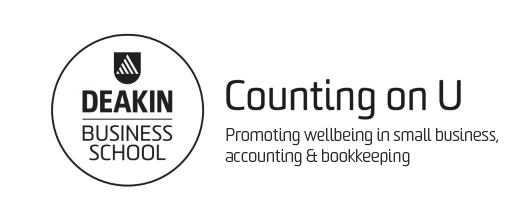Counting on U Newsletter #3 07/03/2023
Mental Health First Aid®
in the workplace – is it effective?
It’s more than 20 years since the first Mental Health First Aid® (MHFA™) training program began in Australia.
Likened to conventional first aid training for physical ill-health, MHFA™ training was designed to help improve our understanding of mental health problems in the workplace.
But how is it tracking two decades on?
While the value of MHFA™ training in the occupational health and safety (OHS) space is sometimes questioned, evidence from Counting on U’s program development, delivery and evaluation indicates it continues to play an important role in the work environment.
An integrated approach to mental health interventions
MHFA™ sits within a suite of mental health literacy programs that teaches people how to identify symptoms of mental health conditions (MHCs) and provide appropriate support until professional help can be sought.
The program falls under a secondary and tertiary intervention, i.e. they focus on responding to MHCs by developing strategies to help improve coping abilities and implementation of appropriate treatment plans for ill-health. Primary interventions on the other hand, are proactive or preventative in nature, i.e. they prevent the onset of mental health conditions (MHCs) by reducing exposure to risk factors and/or increasing exposure to protective factors.
Professor Andrew Noblet says workplace interventions have evolved along three main threads or disciplinary traditions: medicine, public health, and psychology.
“The integration of these three threads has the potential to optimise both the prevention and management of mental health problems in the workplace – that is, an integrated approach to mental health programs.”
Counting on U’s unique approach
The Counting on U (CoU) program does this by combining MHFA™ with Relationship Building Training (RBT).
Prof. Noblet explains that integrating RBT with MHFA™ delivers training that operates on two important levels: “At one level, RBT and MHFA™ represents a major public health initiative that uses business intermediaries to reach a vulnerable, isolated population (small business owners).”
“When they notice the signs of depression, anxiety and other MHCs, business advisers who’ve completed the RBT-MHFA™ training feel much more confident about raising the matter and encouraging the owner-client to seek help.”
“At a second level, the RBT and MHFA™ helps to give business advisers the necessary tools for developing higher quality relationships with their clients, to better understand the business and personal needs of owner-clients and to provide advice that can prevent/reduce financial distress.’
CoU therefore integrates primary, secondary and tertiary mental health strategies by giving business advisers the skills to identify clients who are struggling with financial pressures and to help alleviate these stressors before they progress into clinical MHCs. And if their clients are already presenting with signs of MHCs, then advisers also have the skills and confidence to encourage help seeking.
MHFA™ evaluation
Evaluation of Australia’s official MHFA™ training program – which includes three million global participants – points to improved knowledge of mental illnesses, appropriate first aid strategies, and the confidence to provide them.
Since its 2021 roll-out, Counting on U has provided 430 online training sessions and 43 one-to-one online coaching sessions.
So far, analyses of participants’ pre-and post-training outcomes show significant increases in their knowledge of mental health issues, confidence in approaching difficult conversations and delivering MHFA™ (such as providing information on services and supports), and an improved quality of client-business relationships.
One of CoU’s key research goals is to assess the approach of embedding MHFA™ training (measuring important tertiary and secondary strategies) into the program structure and to also undertake comprehensive, research-to-practice evaluation of the interventions.
The need for an organisation-wide, multi-disciplined approach
When it comes to creating a safe, healthy work environment, Counting on U recognises that while MHFA™ is a fundamental tool, efforts to protect and promote workplace mental health should not end there.
Supporting mental health at work means creating an environment that is psychologically safe for everyone and to be effective, MHFA™ training needs to be implemented as part of a broader, organisation-wide approach to enhancing the wellbeing of both employers and employees. This includes ensuring that support is available for the trained MHFAiders within each organisation.
Prof. Noblet says that rapid change within organisations across all sectors – along with the impact of an ongoing pandemic – has increased the severity and scope of workplace stress.
“Mental illness is the single biggest cause of disability in Australia and reducing this burden relies heavily on initiatives which use innovative, multi-discipline approaches that build on and extend existing systems and services.”
Find out more about the 2023 CoU Program and register for training: The 2023 Program | Counting on U (deakin.edu.au)
